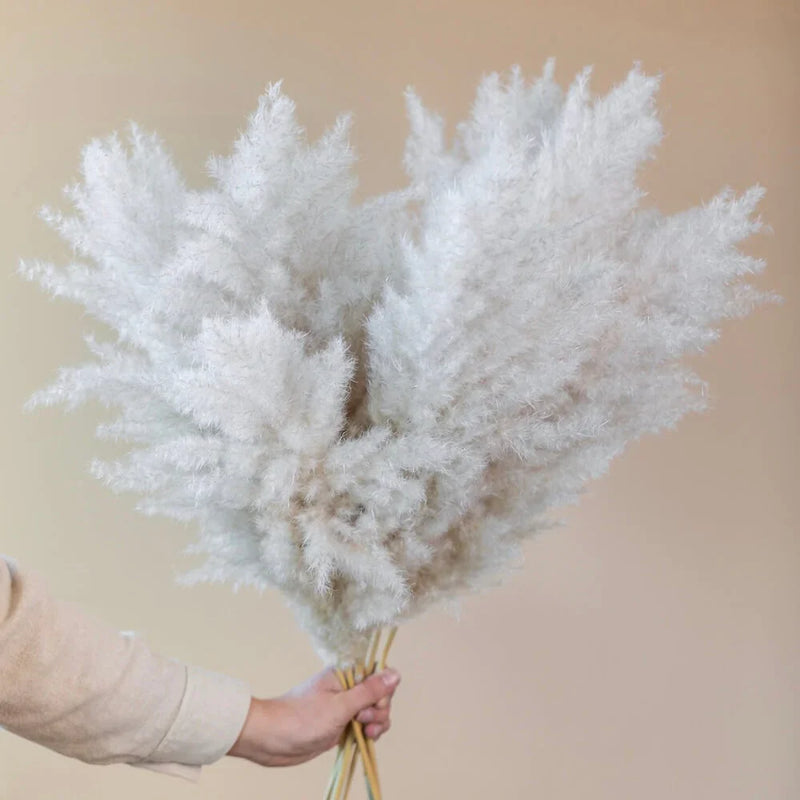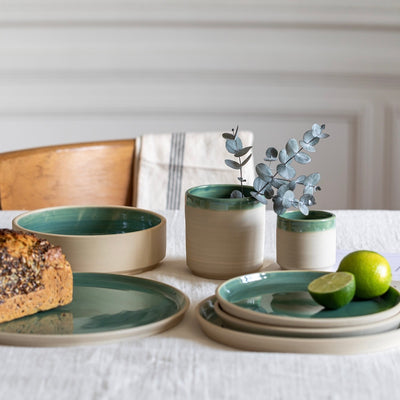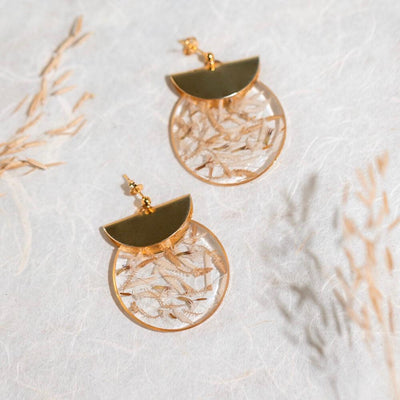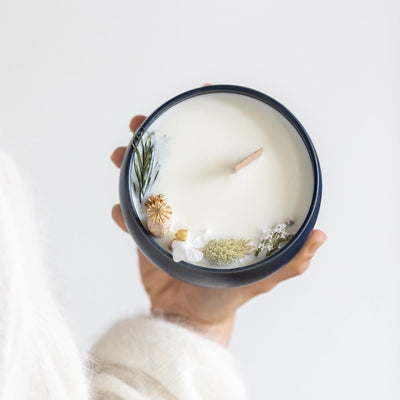
All about the pampe grass
Summary
Pampa grass (Cortaderia Selloana), also called feathered reed, is a perennial plant of the grass type, native to South America. This is available in several varieties and colors. The most popular species of the pampe grass are Cortaderia Selloana Albolineata with silver white feathers and Cortaderia Selloana Rentadleri with purple pink plumes.
Thanks to its tuft of long silky plumes, the pampe grass offers a beautiful decoration in your interior and in your garden. If you want Buy Pampa grass, we offer on Flowrette. Beautiful stems, very bushy and very slender.
However, you should know that the pampe grass is considered an invasive plant, so make sure to delimit its space.
Where to find the grass of the pampas? How to grow it and when to cut it? Why put herbs from pampas in your decoration?
Discover everything you need to know about the pampe grass in this article as well as our advice to maintain it!
Where to find herbs from the Pampa?
The flowering period of the pampe herbs extends from September to October. You can find them everywhere in nature, especially on the edge of water points (river, lake, sea).
To pick these plants, you have to be very careful and put gloves because the edges of the pampe grass leaves are very sharp.
You can also find pampas herbs in botanical stores and your florist and in botanical stores.
If you want to decorate your home with dried pampa herbs, you can order online. At Flowrette, you will find a large choice of bouquets with very affordable prices for the decoration of your interior.
We offer grass boots from the Pampa alone but also bouquets made up of pampa and dried flowers to satisfy all your desires for decoration.
If you want to know more about where to find pampe grass, we have a dedicated article.
Good to know:
The height of these grasses can reach three meters!
How to grow the grass of the pampas in the gardens?
The planting of the grass of the pampas is planned in the spring to obtain a first flowering in the fall. Choose a place in your garden that receives direct sunlight.
Then prepare the floor in your garden. Pampa herbs like when the ground is well drained. Plow the earth to ventilate it, then add organic compost, manure or peat to better fertilize plants.
If you choose to plant seeds rather than sowing in your garden, you will have to sow them directly in the ground. Do not cover them with earth otherwise the seeds cannot germinate. However, you can slightly rat the floor to prevent the seeds from being eaten by birds or they fly away. Don't forget to water them! These plants indeed need water and sun to push well.
To plant sowing in your garden, dig holes in the ground using a shovel. Espace the holes of at least two meters if you intend to plant several massifs. The pampe grass grows in width and height, if you do not take this growth into account, the area may seem crowded.
Place gravel in the bottom to ensure drainage. Then separate the roots by hand and place the plant straight in the hole. Surround it with soil and gently pat the floor so that your plant remains in place. Sprinkle immediately and copiously to promote rooting.
You should know that the grass of the pampas does not support the cold well, which is why it will be necessary to make sure to protect it, especially during the first winter using a wintering veil and this, until The end of the frosts.
Pampa grass maintenance
Pampa grass requires a little maintenance. You should know that your plants need to be watered once every two weeks during the first year of growth. During extreme droughts, they must be watered more frequently.
It is important to maintain the soil uniformly humid. To find out if your plants are well watered, drip your finger with an inch in the ground, you will feel the humidity.
You must also fertilize the pampe grass during the first year at the start of each season except winter (in early spring, summer and fall). From the second year, you can fertilize the grass until early spring.
Good to know:
Pampas herbs are sometimes infected with a fungus in the form of spots. It usually arrives during hot and rainy periods. To effectively treat the infection, just use a fungicide.

When to cut the herbs of the pampa?
You can cut herbs from the pampa in the spring. Use a hedge cutter to cut old herbs. The size prevents plants from becoming invasive.
If you live in a place where there are risk of frost, put mulch on the roots of your grass of the pampas before winter.
Remember to cut all the floral stews before the pampe grass releases its seeds.
Why put herbs from pampas in your decoration?
The pampe grass is easily integrated into all styles of interior decorations. The dense foliage of this grass gives it a majestic port that enhances any room in your home.
For the decor of your living room, you can, for example, have a few pink feathers in a large vase that you will place in a corner. You can also compose a bouquet with dried flowers and a few pampe feathers. Palm leaves and eucalyptus leaves are perfectly associated with the grass of the pampas.
It is also possible to create a crown made up of pampe herbs and dried flowers in various colors. This is a perfect decoration for the walls of your house. A suspension made with pampe feathers will easily find its place above your dining table.
Pampa herbs can also be placed outside, especially on a terrace. The herbs of pampes of pink or beige colored sublimate the gardens! In addition, you can use them to create intimacy around your patio or your pool.
Pampas herbs are neither difficult to find nor grow. You just have to invite these plants to your interior or in your garden to bring a bohemian touch that will attract the attention of your guests!

Some decorative advice with Pampa
To go further, we have prepared an article to you to give you 7 Decorative tips with pampe grass. An article that will allow you to find beautiful ideas for your decoration.





Écrire un commentaire
De quoi se mêlent eve et nadia?
Ce sont des végétaux magnifiques, si quelqu’un veut en faire pousser il est libre de le faire et de prendre le risque de croiser d’autres flics que vous deux.
De quoi se mêlent eve et nadia?
Ce sont des végétaux magnifiques, si quelqu’un veut en faire pousser il est libre de le faire et de prendre le risque de croiser d’autres flics que vous deux.
De quoi se mêlent eve et nadia?
Ce sont des végétaux magnifiques, si quelqu’un veut en faire pousser il est libre de le faire et de prendre le risque de croiser d’autres flics que vous deux.
De quoi se mêlent eve et nadia?
Ce sont des végétaux magnifiques, si quelqu’un veut en faire pousser il est libre de le faire et de prendre le risque de croiser d’autres flics que vous deux.
1
#comments 2